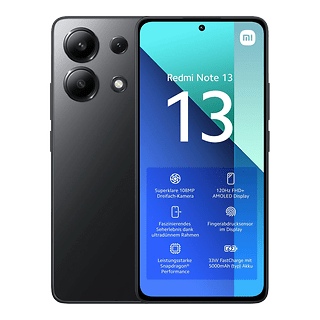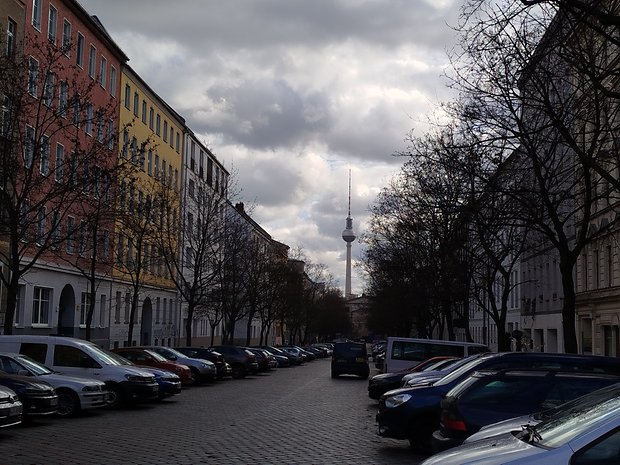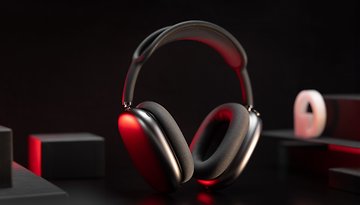Xiaomi Redmi Note 13 4G Review: Great Display at a Good Price


We at nextpit accepted Xiaomi’s challenge and tested all five Redmi Note 13 models. Today we are getting a look at the junior model in 2024’s line-up, the Redmi Note 13 4G. Priced at around $200 (€200), what does it offer in terms of performance, camera, display, and battery life? Let’s find out!
Good
- Bright and smooth OLED screen
- Four years of security updates
- Good battery life
- 33 W charger included
Bad
- Questionable secondary cameras
- Nineteen third-party apps by default

Redmi Note 13 4G In a nutshell
We were critical of Xiaomi’s decision of launching the Note 13 Pro in a 4G model, but for the base Note 13 that limitation is fine in light of the €200 MSRP (approx. $220). The phone was launched on January 15, together with its four bigger siblings:
Compared to the 5G model, the junior Note 13 offers the same FullHD+, 120 Hz, 6.67-inch OLED display, the same camera kit with its 108-megapixel main camera, and identical battery and charging specifications.
There are however some important changes, with an entirely different Snapdragon 685 processor, more modest memory options to reach its price point, and a different design without a camera island.
Xiaomi Redmi Note 13 4G design and build quality
The Redmi Note 13 4G offers a nice design that manages to hide its plastic build with shiny reflective materials. In the front, the big 6.67-inch OLED display is the center of attention, offering a good combination of resolution and refresh rate that was exclusive to premium models not so long ago.
Pros:
- Good build quality.
- Bright and smooth OLED screen.
- Headphone jack and microSD support.
- Included case.
Cons:
- Fingerprint magnet.
The FullHD+ (2400 x 1080 pixels) display is surrounded by relatively small bezels, and refreshes at a fast 120 Hz for smooth animations. And just like many 2024 phones, Xiaomi advertises a high 1800 nits max brightness. In practice, outdoor usage isn’t a problem for the Redmi Note 13 4G.

Another feature that used to be exclusive to more expensive phones is the under-display fingerprint reader, which worked fine in our tests. Besides that, Xiaomi protects the display with Gorilla Glass 3, which is not a common feature in the price range.
Still in the resistance department, the phone is rated for IP54 water and dust protection. While we criticized the Note 13 Pro 4G for this point, the basic Note 13 4G is competitive with its direct competitors.

On the back, the shiny plastic looks nice at first glance, but it will quickly collect fingerprints. For better or worse, we expect most people will hide the phone with the included protective case.
To round up the design, around the flat edges of the Redmi Note 13 4G you will find the volume rocker and power button on the right. Speaker, USB-C port, and hybrid microSD/dual-SIM tray on the bottom. Headphone jack, speaker, and IR blaster on the top, with an empty left side.
Performance and software
Powered by a relatively new Snapdragon 685 processor, the Redmi Note 13 4G offers an OK performance for daily tasks, and can even game with modest graphical settings.
Pros:
- Adequate performance in daily tasks.
- Can play mainstream games.
- Four years of security updates.
Cons:
- No 5G support.
- Ads and bloatware.
With modest expectations for a $200/€200 phone, the Redmi Note 13 4G performed fine in our tests, except for some hiccups during the demanding initial setup when the phone is updating many things at the same time.
| Redmi Note 13 4G (Snapdragon 685) |
Redmi Note 13 Pro 4G (Helio G99 Ultra) |
Redmi Note 13 Pro 5G (Snapdragon 7s Gen 2) |
Redmi Note 13 5G (Dimensity 6080) |
Galaxy A14 5G (Dimensity 700) |
Redmi Note 11 (Snapdragon 680) |
|
|---|---|---|---|---|---|---|
| 3D Mark Wild Life Stress Test |
Best loop: 660 Worst loop: 656 |
Best loop: 1245 Worst loop: 1217 |
Best loop: 3050 Worst loop: 2754 |
Best loop: 1333 Worst loop: 1307 |
Best loop: 1200 Worst loop: 1193 |
Best loop: 446 Worst loop: 442 |
| Geekbench 6 | Single: 482 Multi: 1601 |
Single: 744 Multi: 2112 |
Single: 889 Multi: 2523 |
Single: 777 Multi: 1996 |
Single: 682 Multi: 1804 |
Single: 385 Multi: 1041 |
| PCMark Work 3.0 | 7431 | 10688 | 13047 | 10582 | - |
After that, general tasks like web browsing, social media doom-scrolling, app switching, and messaging worked better than we expected for such a modest phone. Those were probably helped by Xiaomi’s usage of fast memory standards—LPDDR4x RAM and UFS 2.2 storage.
Heavier processing tasks can quickly show the Snapdragon’s limits, so don’t expect snappy performance when editing videos, as showcased by the Geekbench numbers above.

When it comes to gaming benchmarks, the Snapdragon 685 (SM6225-AD) cannot hide its roots. Although the chip debuted in Q1 2023 on the Redmi Note 12 4G, the processor is basically an overclocked version of the Snapdragon 680 (SM6225) from 2021. The result is around half the gaming performance of its 5G version or of the similarly priced Galaxy A14 5G that impressed Camila Rinaldi in 2023.
Numbers aside, just like its bigger brothers, the Redmi Note 13 4G should be able to run most Android games. We tested both Call of Duty Mobile and Genshin Impact with the default low graphical settings. While CoD:M was smooth enough to win some rounds, Genshin was slightly below 30 fps but was still playable.

Another consequence of having an older processor is the lack of some modern standards. The Redmi Note 13 4G is not only limited to 4G, but also Wi-Fi 5 (802.11ac) and Bluetooth 5.1. Those trade-offs are expected in sub-$200 phones, but are worth mentioning. On the other hand, the Note 13 4G features NFC and the traditional Xiaomi IR blaster.
Software
Xiaomi packs MIUI 14 over Android 13 with the Redmi Note 13 4G, and the experience is the usual one for a low-end phone from the brand: Lots of customizations and bloatware.
The default installation takes over approximately 31.9 GB of storage and included in our review unit a record-breaking 20 third-party apps and games. Besides that, expect to find some ads on the first-party apps—most of them can be hidden or disabled within a couple of minutes, however.

A very welcome change in the Redmi Note 13 4G is the improved security update policy, with four years of security patches (up from 3 in the Note 12). When it comes to Android upgrades, on the other hand, Xiaomi still promises two versions (up to Android 15), which is still competitive.
Xiaomi Redmi Note 13 4G camera
The triple camera setup on the Redmi Note 13 4G follows the same recipe found in the 5G model: A competent 108-megapixel main camera, an 8 MP ultra-wide lens, and the questionable 2 MP macro.
Pros:
- Good shots from the 108 MP main camera.
- Decent selfies.
Cons:
- Blurry ultra-wide photos.
- Low-resolution (and useless) macro camera.
Pictures from the 108 MP main camera were pretty good at the standard 1x focal length. For daylight shots, even the 3x digital zoom images offered usable results for sharing on social media or messaging apps—although not “equal [to] a traditional optical zoom”, as Xiaomi says.
Night shots were tricky on the Redmi Note 13 Pro 4G. However, the phone made a valiant effort with its night mode, which managed to give better-than-expected results with improved colors and sharpness when the standard mode simply drowned in the darkness…
The 8-megapixel ultra-wide camera could not hide its lower resolution in our tests, resulting in less sharp images, with some blurriness in daylight pictures, and lots of them during night shots. Night mode is unavailable for the ultra-wide camera, at least in the 14.0.7.0 firmware version we tested.

Macro shots are the usual-smeared collection of pixels. Even when the camera preview suggests we are going to get a decent shot, the resulting file is simply not worth the time. Long time nextpit readers are familiar with our frustration in seeing the useless camera again and again, and as usual, the lens is not available among the usual camera modes in the app, but in the settings for the "Photo" mode, next to the flash, aspect ratio, and HDR options.
Selfies were a mixed bag with the Redmi Note 13 4G. Night selfies were surprisingly good, both with and without portrait mode. Also surprising was the fact that daylight selfies were relatively not as good, with some heavy sharpening in the default mode, and some blurriness in portrait mode. Considering its price range, however, we can forgive these faults.
Xiaomi Redmi Note 13 4G battery
With the same 5000 mAh battery capacity as many of its competitors (and other models in the Note 13 series), the Redmi Note 13 4G offers decent battery life. And its included charger is roughly twice as fast as the optional adapter in competing phones.
Pros:
- Good battery life.
- Charger included in the box.
- Fast charging for the category.
Cons:
- -
With more modest CPU specifications, the Redmi Note 13 4G offered noticeably better battery life than the Note 13 Pro 4G model we recently tested. PCMark’s battery test returned a 18h4min runtime for its simulated workload, between 80 and 20% charge at 200 nits brightness.

That result was roughly 50% better than on the Pro model, with one caveat: The phone was at its default 60 Hz refresh rate. With 120 Hz, the Redmi Note 13 4G lost around 20% in the test, still beating the Note 13 Pro 4G.
With regular usage on the default 60 Hz display mode, two days of battery life should be doable. But frequent video streaming, gaming, and lots of screen time will require a daily recharge, especially with the 120 Hz refresh rate.
| Redmi Note 13 4G | Redmi Note 13 Pro 4G | Redmi Note 13 Pro 5G | Galaxy A14 5G | |
|---|---|---|---|---|
| 5 minutes |
|
|
|
|
| 10 minutes |
|
|
|
|
| 20 minutes |
|
|
|
|
| 30 minutes |
|
|
|
|
| 1 hour |
|
|
||
| Full charge |
|
|
|
|
| PC Mark Battery test |
|
|
|
|
Charging the Redmi Note 13 4G is a non-issue. Xiaomi included the max-specced 33 W adapter in the box (but we curiously received a UK charger), which even its Galaxy competitors are skimping on. Better still, the Xiaomi setup reached a full charge in half the time the Galaxy A14 required with an optional adapter.
Xiaomi Redmi Note 13 4G technical specifications
| Xiaomi Redmi Note 13 4G | |
|---|---|
| Display | 6.67-inch OLED 2400 x 1080 pixels 120 Hz refresh rate |
| Processor | Qualcomm Snapdragon 685 |
| Memory | 6 / 8 GB LPDDR4x RAM 128 / 256 GB UFS 2.2 storage microSD expansion |
| Software | MIUI 14 based on Android 13 |
| microSD | ✔️ |
| Dual-SIM | ✔️ |
| eSIM | ❌ |
| Camera | Main: 108 MP, f/1.75 Ultra-wide: 8 MP, f/2.2 Macro: 2MP, f/2.4 |
| Selfie | 16 MP | f/2.4 |
| Audio | Stereo speakers 3.5 mm headphone jack |
| Battery and charging | 5000 mAh 33 W wired charging Charger included |
| Connectivity | 4G | Wi-Fi 5 | Bluetooth 5.1 | Infrared blaster | NFC |
| IP certification | IP54 |
| Dimensions and weight | 162.2 x 75.6 x 7.97 mm, 188.5 g |
| Other points that may interest the nextpit community:
|
|
Final verdict
While we criticized the other 4G model in Xiaomi’s 2024 mid-range line-up, the Redmi Note 13 4G presents a much more compelling case with its sub-$200 price. An excellent display, a decent camera, and good battery life offer almost the same experience as the much pricier Note 13 Pro 4G.

And the trade-offs found in the bigger model are mostly forgiven for $200: There are better-performing phones in this price range with more modern connectivity standards, but they don’t usually offer a bright 120 Hz OLED display or a full battery charge in less than 1h30, let alone both.
In short, the Redmi Note 13 4G is a well-rounded package for anyone looking for a cheap and reliable phone. The four years of security updates not only put the Chinese phone at the top of its price category, it also makes the phone much easier to recommend to a relative or friend.























































